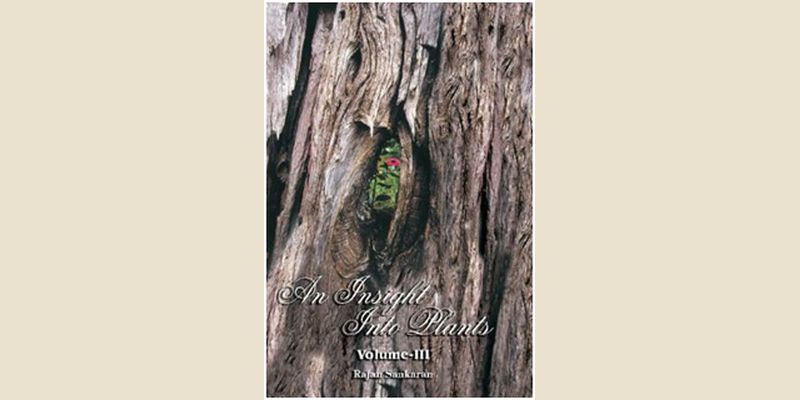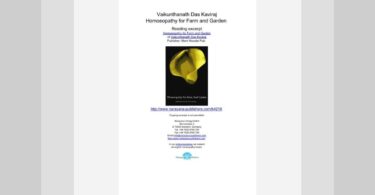An Insight into Plants Volume III
Author -Rajan Sankaran
Homeopathic Medical Publishers, Mumbai January 2007,
Hardcover, 833 pages ISBN: 978-81-903378-4-7,
Reviewed by Harry van der Zee, Netherlands
Reprinted with permission from Homoeopthic Links, 1-2/2008, Page 101
Corrie Hiwat’s review of “An Insight into Plants Volume I and II” (published in LINKS volume 15 issue 3/2002, page 169) discussed the outlay of the series. The volume under review here was published earlier this year. For an understanding of the philosophy and practice behind this series the reader is recommended to read “The Sensation in Homoeopathy” by the same author.
If you take yourself seriously as a homeopath and if you want to keep in touch with the direction in which homeopathy is developing, you cannot ignore Rajan Sankaran’s work and the increasing number of books he has written. Throughout the years there has been a clear line of development evident in his books; among them the three volumes of “An Insight into Plants” form a set of handbooks every homeopath should have close to hand.
Many homeopaths all over the world have worked for several years now with Rajan’s concept of the Vital Sensation and with his interview technique and case analysis of reaching to the Vital Sensation in their patients; the first two volumes of “An Insight into Plants” have proven to be of value in finding a remedy from the plant kingdom if indicated.
To the twenty-one plant families discussed in the first two volumes this third volume adds five more (Brassicaceae/Cruciferae, Dioscoreaceae, Piperaceae, Rosaceae, Ruta- ceae), as well as one kingdom (Fungi) and one group (carnivorous plants).
In Julia Schiller’s excellent article “An Insight into Taxonomy” in LINKS volume 18 issue 4/2005 she challenges Rajan to improve on his work, among others things by incorporating more input from the homeopathic community. Showing that these volumes indeed are a work in progress, Rajan has entered many new cases of the previously discussed families from a wide variety of internationally well-known homeopaths.
These cases partially confirm the ideas expressed in the earlier volumes, but also help improving the understanding of the families and have allowed the addition of some plants filling some of the gaps in the earlier tables of families and miasms. At other levels too, Rajan responds in this new volume to Julia’s constructive criticism of the two earlier volumes.
Whether or not taxonomy purely based on genetics should be the basis for forming homeopathic families of remedies remains a valid question. In the way Rajan has formed his families he to some extent already taken the liberty of deviating from strict taxonomical rules, which 1 think is a practical and valid approach. His group of insect eating plants, for instance, consists of five plants coming from four different families.
There are many ways to constitute families of practical use to homeopaths. Within the plant and animal kingdom genetics is only one, biotopes that transcend not only the borders of families but also of kingdoms are another.
To save homeopaths from having to leaf through three volumes in one’s daily practice, this third volume includes tables in the appendices that include all families investigated so far, together with four new ones (Araceae, Ericaceae, Piperaceae, The- ales) that are apparently under construction.
The Chart of Plant Classification by Jorg Wichmann, as the last appendix, makes clear that not only Rajan, but all of us dedicated to further exploring the width and depth of the homeopathic material medica still have a long way to go in gaining insight into plants.




